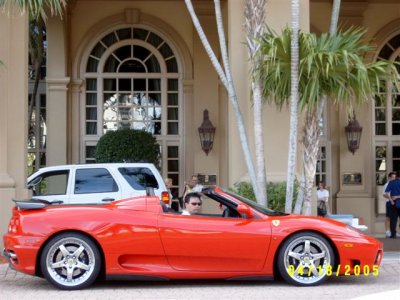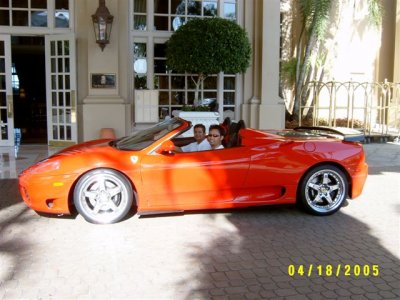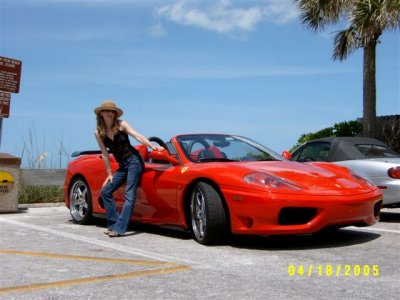Acura NSX-T
A Fine Balance
The '97 NSX answers its critics, no louder than necessary
By Sam Moses
Autoweek, September 1st 1997
Driving around in a gorgeous car must be something like being a gorgeous woman: Just when you think you ve heard all the lines, someone comes along with a new one. We were in a parking lot, slipping the easily removable roof panel of our brilliant yellow NSX into the surprisingly roomy trunk, when a guy pulled up in a new Chevy pickup, grinned, and said, "Somebody has too much money.
We felt obliged to burst his bubble, so we returned his smile and replied that it sure wasn't us, because we didn't own the car. As we drove off, we imagined him mumbling to himself, "Well then, somebody has too much luck."
We doubt that he said, "Somebody doesn't have enough engine for his money."
But when was the last time you read a road test of an NSX that didn't say that (in this case, that money is $88,810)? We will stop short of disputing that opinion here, but we will not endorse it. For one thing, the main thing, the latest and punchiest version of the seven-year-old dohc V6 has grown from 3.0 to 3.2 liters (but only with the six-speed, also new for '97), from 270 to 290 horsepower, and from 210 to 224 lb ft of torque. For another thing, it is an extremely sweet and tractable engine, with a usable, linear power curve - refined, in a word, all the way up to its 8000-rpm redline. For yet another: How fast can you really go, on the road (and the NSX is, above all else, a car for the road)? It will accelerate to 60 mph in about 5.0 seconds, and complete a quarter mile in less than 13.5; we would suggest that such acceleration is just about right, for practical application.
Yes, more money can buy you more (Porsche Turbo) - for that matter, much less money can buy you the same (Corvette) but how and where are you going to use it all, smoothly and sanely? And besides, a Ferrari 355 costs nearly 50 grand more, and delivers no more speed from its V8. So why don't testers complain about the weakness of that engine?
We would say that the NSX engine, by design. is an optimum. not a maximum. Titanium connecting rods and all.
We don't mean for this driving impression to become a comparison test. but any discussion of the NSX tends to slip in that direction, because the car's high price and historically low sales seem to need a defense. Let's assume that in a three-car comparison test of performance (including handling) for cost, the NSX would finish second, behind the $42,000 Corvette and slightly ahead of the $105,000 Porsche Turbo (please, indulge us). Now let's add the distinction factor. Everybody has a Porsche or a Vette, At such dollar levels, such things matter.
And in this new '97 color, Spa Yellow, a rich pearlescent paint that glows golden in the sun. the NSX is a very distinctive piece indeed - although (and this is shocking) the paint on the driver's side rocker panel of our test car was mlsmatched. And, of course, there's no getting around the fact that, no matter how well the supercar styling has held up, people have been looking at it for seven years now.
Where others believe that for $89,000 the NSX should have a better engine, we believe that for $89,000 the NSX should have a better feel to the new and compact six-speed gearbox. Smoother shifting. The ratios were wonderfully close - it was pleasing to find that sixth was fully functional, not merely an overdrive as in the Vette - the throws were short, the leather-wrapped and neatly stitched knob was tidy, but a dull ka-chunk came with too many of the gear changes, even the careful ones. Third gear to second, the downshift that's most commonly hammered, could be made hard and quick with a good blip, but there was still an underlying notchiness. It felt harmless, but was annoying, and was definitely beneath the refinement level of the rest of the car.
Besides the styling, there are two things that make this car feel special, like the supercar that it is: the interior layout, and the balanced handling. It's not the easiest of cars to climb in and out of, because it's so low, but the view from inside - through new heat-absorbing "green glass," as it's called - is very commanding because there's no engine to elongate or elevate the hood, and that also allows a roomy sloping of the dash panel between the seats, containing the climate control and cathedral-like Bose sound systems. Everything is black leather. The fit of the driving position, not just the seat is perfectly...balanced.
Balance-wise, there are very little changes at 40, 60, 80, 90 miles per hour in the turns, whether at half, three-fourths, or full throttle. G forces might tug at your head, but the NSX will feel light under your feet and fingertips - much lighter than its 3164-aluminum-packed pounds. The electrically assisted power rack-and-pinion steering and sophisticated double-wishbone suspension with aluminum pieces deliver a very delicate feel for the road, without being harsh on bad pavement.
At GingerMan, the NSX was undaunted by the likes of this Ferrari F40
But mostly, the front wheels will not be in a centrifugal tug of war with the rears. We took the NSX to GingerMan in western Michigan on a day when the track was full of Vipers and Ferraris, each marque having owners' club events in the area that weekend, and although the NSX was not the fastest car on the track, it was probably the steadiest. The neutral handling inspired confidence that led to repeated laps during which we hit the lines perfectly. When we couldn't make the car understeer we sampled the oversteer and, Yeow! The NSX loves it. It's a rare car indeed that feels this secure with the tail out, and remains so forgiving and controllable in that attitude. (The traction control was switched off to achieve this, of course.)
There's no telling how much the Bridgestone Potenza tires contributed to this control at the edge, but we suspect it was to a significant degree. The fronts are 215/45ZR-16 and the rears 245/40ZR-17 - and the rears have a softer compound, to limit oversteer. In addition, the left-side tires are wound in the opposite direction of the rights, which slightly increases toe-in at speed. We were impressed that they didn't squeal; at times of great stress we could hear them trying to squeal, but they limited their protests to a sort of groan.
The brakes for '97 have grown along with the engine; the vented front rotors are 11.7 inches in diameter and 28 mm thick, and the rears are 11.9 inches and 23 mm. GingerMan is hard on brakes, and they survived the demanding afternoon in the heat without any sign of fade.
The engine uses an aluminum block and heads, and achieves its increases to 3.2 liters by using sleeves composed of a material that Acura calls FRM, for fiber-reinforced metal. Another trick is the Variable Volume Induction System, which broadens the torque curve by changing the configuration of the intake system on the fly. A new stainless steel exhaust system completes the 20-horsepower package, and delivers the wonderful growl that, lamentably, only begins at about 5000 rpm and doesn't hit its true beautiful song until 6000.
If you believe that there should be more to the engine than that, because the Porsche gives 400 horsepower and the F355 gives 375 and the Corvette gives 345, and even the relatively lowly Firebird gives 305...well, okay. Believe what you want, but if you turn a blind eye to the unmatched sophistication of the rest of the car, you're missing the best part.











